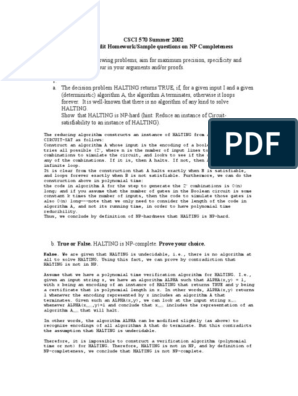0% found this document useful (0 votes)
36 views6 pagesAnalysis of Algorithms LJ
The learning journal reflects on the exploration of NP-completeness and the halting problem in Unit 8 of a computer science course. The author discusses their understanding of undecidability, the challenges of condensing complex proofs, and the evolution of their perspective on hard versus impossible problems. Through peer discussions and instructor feedback, they gained confidence in articulating theoretical concepts and recognized the relevance of these ideas in practical programming contexts.
Uploaded by
jnrshakarCopyright
© © All Rights Reserved
We take content rights seriously. If you suspect this is your content, claim it here.
Available Formats
Download as DOCX, PDF, TXT or read online on Scribd
0% found this document useful (0 votes)
36 views6 pagesAnalysis of Algorithms LJ
The learning journal reflects on the exploration of NP-completeness and the halting problem in Unit 8 of a computer science course. The author discusses their understanding of undecidability, the challenges of condensing complex proofs, and the evolution of their perspective on hard versus impossible problems. Through peer discussions and instructor feedback, they gained confidence in articulating theoretical concepts and recognized the relevance of these ideas in practical programming contexts.
Uploaded by
jnrshakarCopyright
© © All Rights Reserved
We take content rights seriously. If you suspect this is your content, claim it here.
Available Formats
Download as DOCX, PDF, TXT or read online on Scribd
/ 6






















































































